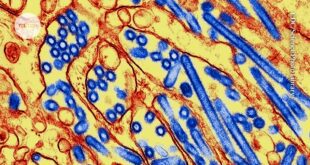Scientists develop new technique for early diagnosis of Parkinson’s Disease
A new technique has been developed by scientists that could help diagnose Parkinson’s disease at an early before symptoms start showing in person, and speed up the process of treatment.
Symptoms of Parkinson’s Disease
It is difficult to diagnose Parkinson’s presently because there is no specific test to detect the condition. Symptoms vary from person to person and similar symptoms have been found in other illnesses, which increases the possibility of a misdiagnosis.
Identifying Parkinson’s Disease risk using alphaSyn-SAA
Scientists in the United States have now claimed that they have come up with a way to identify how the abnormal proteins, which are related to the disease, buildup long before the symptoms began to show. The Lancet Neurology journal published the findings of the scientists.
The research shows that the method, called as alpha-synuclein seed amplification assay (alphaSyn-SAA), can identify people who stand at risk of developing Parkinson’s disease.
The method can create a scope for early detection, diagnosis and the right treatment of the disease. In the last 25 years, the prevalence of Parkinson’s has doubled globally with around 10 million people suffering from the disease.
Promising implications of the new technique
The study’s co-lead author and University of Pennsylvania’s Prof Andrew Siderowf said, “Identifying an effective biomarker for Parkinson’s disease pathology could have profound implications for the way we treat the condition, potentially making it possible to diagnose people earlier, identify the best treatments for different subsets of patients and speed up clinical trials.”
Cautions and limitations
The study included 1,123 participants, which was one of the largest assessments so far carried out, to study the usefulness of the alphaSyn-SAA technique. The study confirmed that the people with Parkinson’s were accurately detected through the technique and also the individuals who were at risk but had no early symptoms were identified before diagnosis.
The researchers, however, cautioned that longer-term studies, taking into account larger sample sizes, would be required to fully understand the effectiveness of the alphaSyn-SAA technique.
 Mind Uncharted Explore. Discover. Learn.
Mind Uncharted Explore. Discover. Learn.
